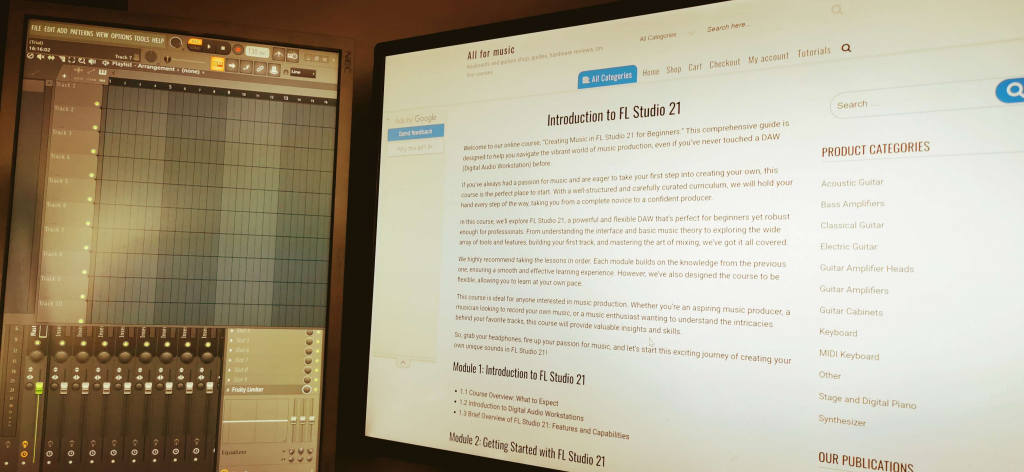The FL Studio 21 Music Production Course provided students with a comprehensive and practical understanding of music production using the powerful digital audio workstation, FL Studio 21. Throughout the course, students covered a wide range of topics and gained hands-on experience to create their own music tracks.

Recap of Music Production Course in FL Studio 21
Module 1: Introduction to FL Studio 21 In the first module, students were given an overview of the course and what to expect. They were introduced to Digital Audio Workstations (DAWs) and specifically explored FL Studio 21, learning about its features and capabilities.
Module 2: Getting Started with FL Studio 21 In this module, students learned how to download and install FL Studio 21 on their computers. They also got familiar with the interface and navigation, allowing them to efficiently move around the software. Additionally, they were taught how to set up their audio devices for optimal performance.
Module 3: Basic Music Theory Module 3 focused on providing students with a foundational understanding of music theory. They learned about scales, chords, and progressions, which are essential elements in music production. The module also introduced rhythm, tempo, melody, and harmony.
Module 4: Exploring Tools and Features of FL Studio 21 Module 4 delved into the various tools and features available in FL Studio 21. Students learned how to use the Step Sequencer for sequencing patterns, the Piano Roll for MIDI editing, and the Mixer and Playlist for arranging and mixing their tracks.
Module 5: Building Your First Track In this practical module, students started building their first track. They began with creating a drum loop and then proceeded to add melody and harmony. They also learned how to incorporate effects and transitions to enhance the overall sound.
Module 6: Mixing and Mastering in FL Studio 21 Module 6 covered the crucial stage of mixing and mastering. Students learned about essential mixing techniques, such as adjusting levels, panning, using EQ, and dynamics processing. They also got an introduction to mastering, including loudness, stereo width, and additional EQ adjustments. Furthermore, they were introduced to FL Studio’s built-in effects and plugins for audio enhancement.
Module 7: Advanced Production Techniques This module introduced advanced techniques to students. They learned how to use automation to add movement and dynamics to their tracks. Advanced sampling techniques were covered, allowing students to incorporate unique sounds into their productions. The module also provided an introduction to sound design basics within FL Studio 21.
Module 8: Final Project: Creating a Full Track The final module of the course focused on the students’ final project, which was to create a full track from start to finish. They began by planning the track and then moved on to the creative process of arranging, mixing, and mastering. This module aimed to put all the skills and knowledge gained throughout the course into practice, resulting in a complete and polished music production.
By the end of the course, students were equipped with a comprehensive understanding of music production in FL Studio 21. They had learned how to navigate the software, apply music theory concepts, use various tools and features, mix and master their tracks effectively, and even explore advanced production techniques. Armed with this knowledge, they were prepared to pursue their musical endeavors with confidence.